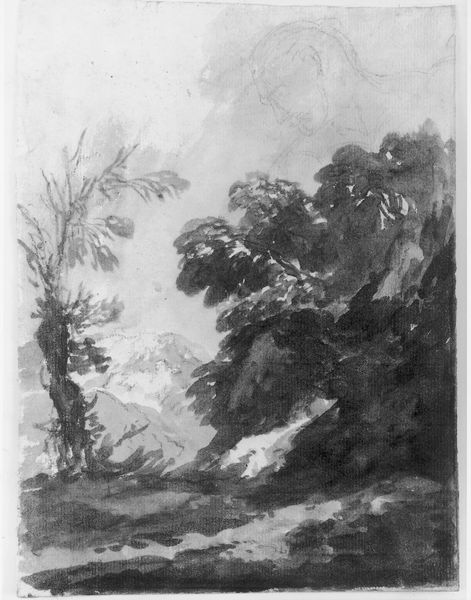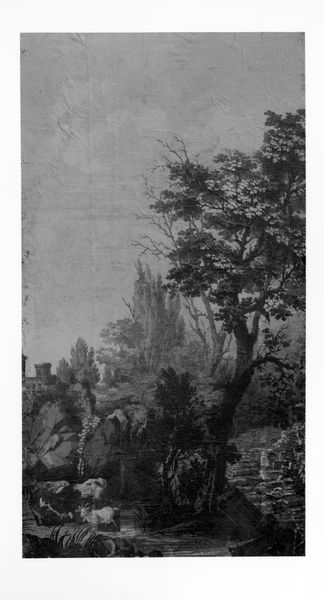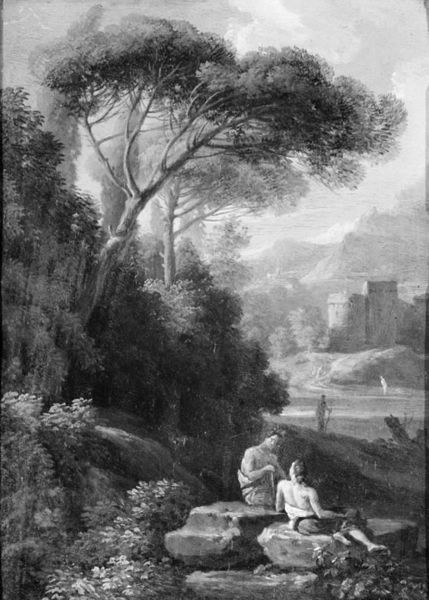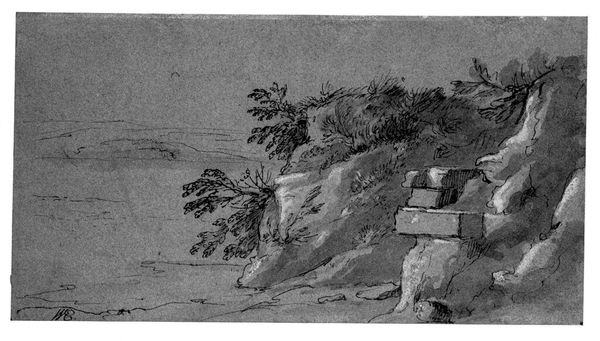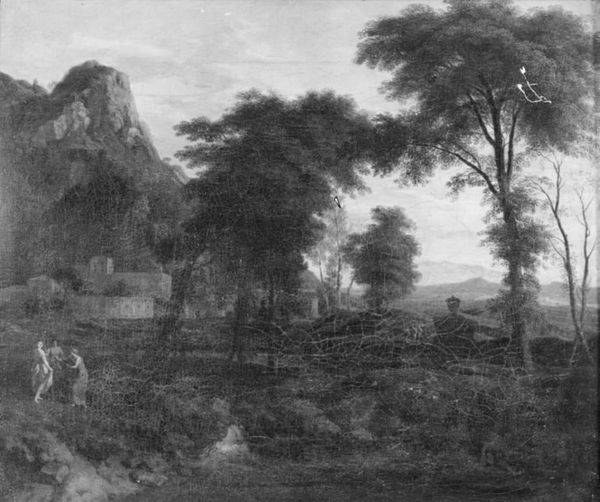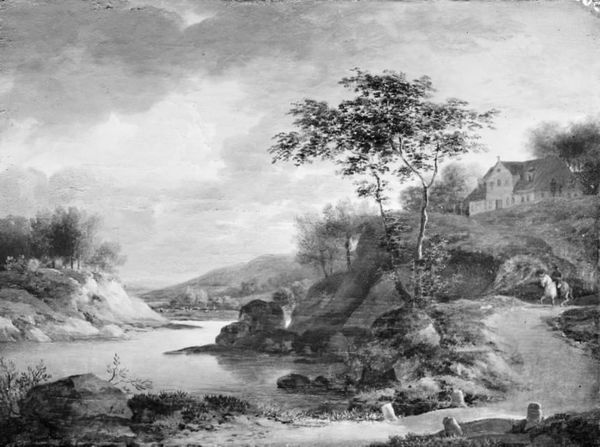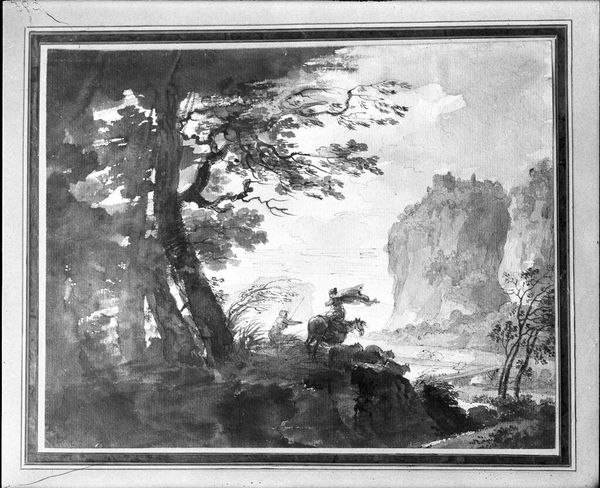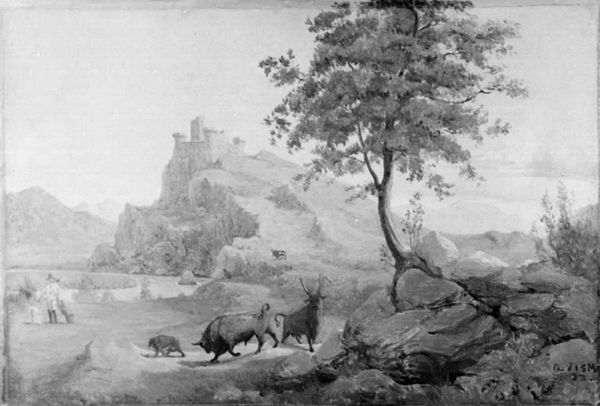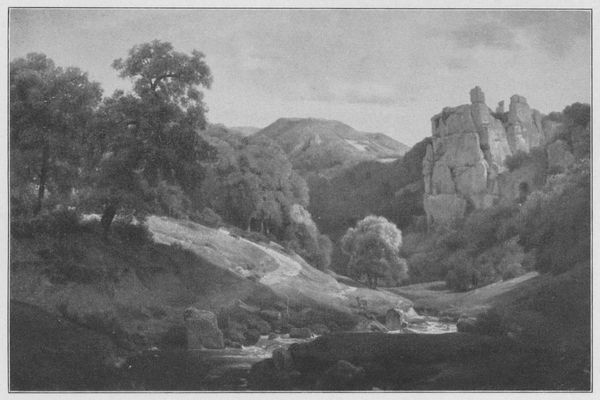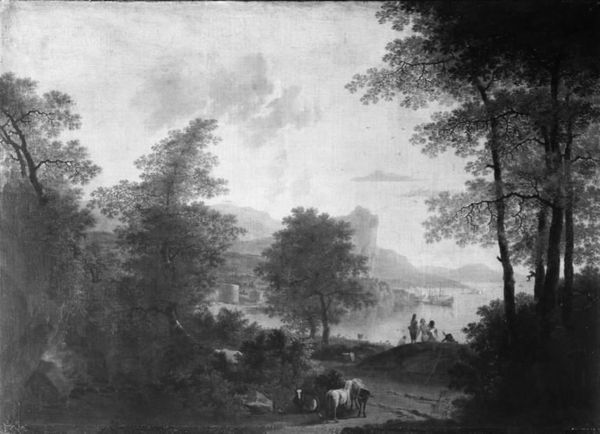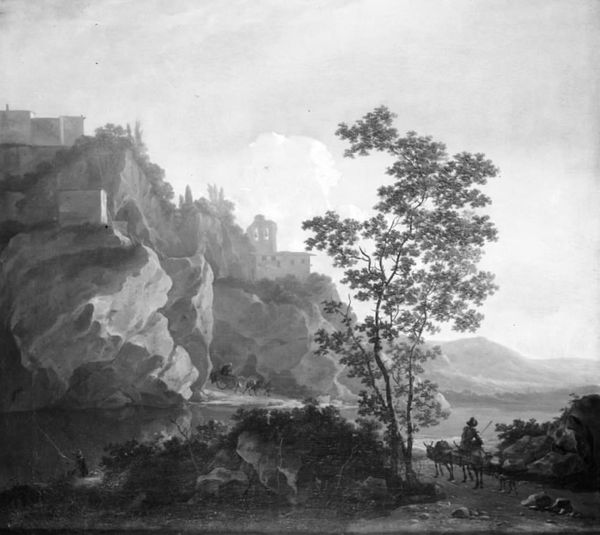
painting, oil-paint, canvas
#
baroque
#
dutch-golden-age
#
painting
#
oil-paint
#
landscape
#
figuration
#
canvas
#
monochrome photography
#
monochrome
#
monochrome
Dimensions: 31.5 cm (height) x 25 cm (width) (Netto)
Curator: Here we have Herman van Swanevelt's "Landscape," painted sometime between 1615 and 1655, executed in oil on canvas. Editor: It feels almost melancholic, doesn’t it? A dusky, subdued atmosphere with the strong, dark monochrome treatment. I find it strangely evocative, like a faded memory. Curator: Landscape paintings in the Dutch Golden Age often served symbolic functions, acting as metaphors for the human condition and reflecting a broader worldview. Notice how the distant ruined castle suggests the transience of worldly power and achievement. Editor: The implication of ruin definitely makes a statement. This feels like more than just an innocent landscape. It subtly interrogates power structures, right? Who lived in that castle, what did they represent, and why are they now in ruins? Curator: That reading isn’t unwarranted. Landscapes were increasingly associated with national identity, conveying ideas about land ownership and cultural heritage. The peasants depicted in the landscape become a symbolic representation of 'the people.' Editor: True, and locating figures, common people at the forefront does give us an intimate portrayal of the common man that certainly democratizes and politicizes this composition. What could they possibly make of the abandoned fortress that they stand before, knowing they will most likely not be able to enjoy those levels of luxury and wealth. Curator: Think about the enduring appeal of ruins, what they represent: time, history, perhaps even loss. That aesthetic resonates even now. The ruined castle set against the landscape creates a particular emotional atmosphere. Editor: Exactly. It forces us to confront narratives of decline and re-evaluate what we deem important. There's a continuous dialogue, and a silent critique of past and present socio-political realities, embedded within the image. Curator: It's compelling to consider how our interpretations change over time. An image painted to convey one set of ideas now speaks to very different conversations around national identity, historical memory, and cultural resilience. Editor: Right. These images from the past become activated sites for present-day analysis and understanding. Examining how values get enshrined and maybe even subtly contested within this scene really resonates for me.
Comments
No comments
Be the first to comment and join the conversation on the ultimate creative platform.

